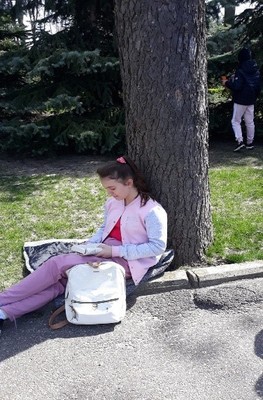Author: Erika Karina Chiriac, ”Constantin Parfene” Secondary School, Vaslui, Romania
Topic: Reading for pleasure
Class level: 11-12 year- olds / 5th grade
Short description (impact on students):
Self Esteem
When students start at an early age to read about diverse people, distant places, and historical events, they become more creative and open. Also, those who have read a lot will naturally be asked to answer more questions – another confidence builder for a young student.
Improved Concentration
This type of concentration on one topic – rather than trying to do many things at once – leads to better focus even after the book is put down.
Critical and Analytical Thinking Skills
The classic here is when a young reader becomes absorbed with a mystery book-Robinson Crusoe. That’s a simple example of how reading helps students develop better critical and analytical skills, something that carries over even after they have put the book down.
Stronger Memory Skills
Think about reading. Reading helps to strengthen memory retention skills. That’s a powerful tool for young students – and older adults, as well.
Expanded Vocabulary
Readers have a larger vocabulary, and the words that young readers learn in a book will eventually make their way into their speech.
Time: 50 minutes
Learning objectives:
• Reading attainment
• Text comprehension and grammar;
• Breadth of vocabulary;
• Positive reading attitudes;
• Greater self-confidence as a reader;
• Pleasure in reading in later life;
• General knowledge;
• A better understanding of other cultures;
• Community participation;
Process:
The students were divided into groups of reading. Students discover not only the usefulness but also the pleasure of being able to read in a second language. Reading can provide opportunities to utilize and sharpen different skills. Reading in English can activate and develop skills like skimming, scanning, predicting, and reading for detailed comprehension.
They read the same book: Robinson Crusoe and after each chapter they have to fill in the reading journal which contains the following headings: title, author, main characters and the exercises:
- Think of two characters.Write their similarities and differences in the diagram.
- Write a summary of the story.
- What is your favourite part of the story? Why?
Proofs:
Useful links: https: //padlet.com/erikakarinachiriac/Bookmarks
https: //www.storyjumper.com/book/read/136342482/62925e6c328b3
Photos:


